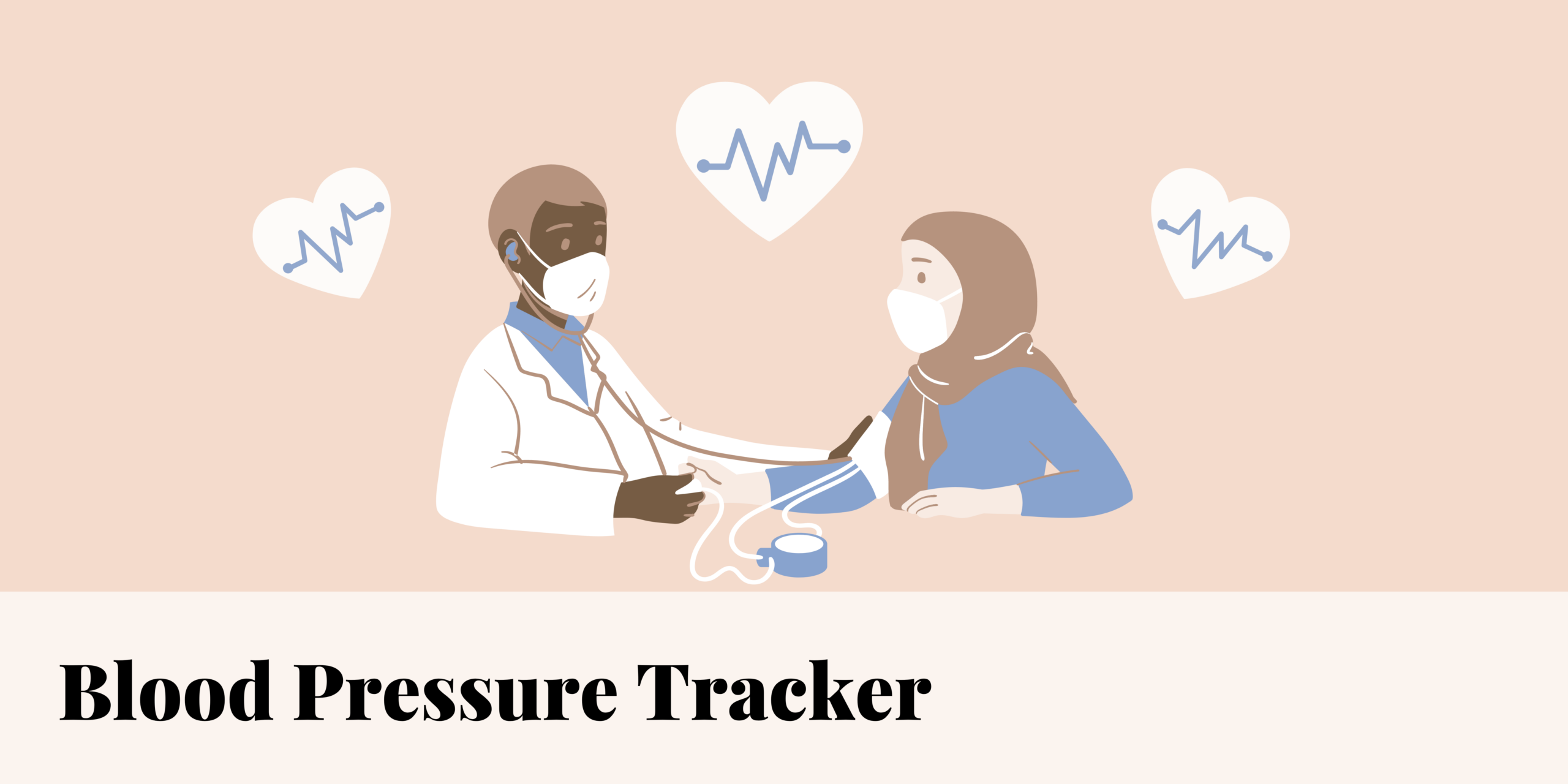Interestingly, Blood Pressure (BP) is also known as “Hypertension”. These two words will be used interchangeably. Why is it important to take blood pressure measurements or to use a blood pressure tracker? Regularly, hypertension is often known as the “silent killer” as nearly fifty percent of American adults have high blood pressure without even knowing it. It is estimated that one out of every five people with high blood pressure are not even aware that they have this major risk factor. The only way to really know that high blood pressure is affecting your health is by getting it checked (1, 3, 6).
Using a platform that can help you keep track of your blood pressure measurement, be your blood pressure checker, and also behaves as your blood pressure diary or blood pressure log…all in one convenient place. That is the significance.
Blood Pressure Tracker
The Significance of Using a Blood Pressure Tracker
Let’s explore the facts first. What is hypertension? What are the normal values? Abnormal? Symptoms? Causes? Are treatments available? Which BP monitor is the best? BP heart rate? Is there any free blood pressure app? So much to discuss in so little time…
Blood Pressure Checker
What is Hypertension?
Hypertension, as mentioned before, is simply high blood pressure. Blood pressure is the physical force that is exerted by the blood as it pushes against the walls of the arteries (3).
Hypertension is a major public health problem and a known independent risk factor to cardiovascular disease and strokes. In the United States alone, recent data reports a prevalence of 30.5 % among men and 28.5 % among women showing higher blood pressure measurements. For the calendar year of 2010, the cost estimated to help with hypertension has surpassed ninety billion dollars (6).
Blood Pressure Measurement

Blood pressure is measured in millimeters of mercury (mm Hg). A blood pressure measurement has two numbers:
- The top number (systolic) is the pressure of the blood flow when your heart muscle contracts, pumping blood out of the heart (4).
- The bottom number (diastolic) is the pressure measured between heartbeats (or when the heart is at rest and refilling with blood to get ready for the next pump) (3,4).
By using the range chart below as a reference, taking blood pressure and recording all measurements can be done from the palm of your hand! By using the CareClinic Platform and the measurement function, recording and tracking will be as easy as a blink of an eye. The red circle indicates where the two values can be inputted (similarly to the blood pressure log provided by the American Heart Association). The blue circle has also been highlighted to indicate weight as often healthcare practitioners will ask to provide that value. There are other measurements available on the platform, also conveniently in the palm of your hands as well. Enjoy to your heart’s content as your own personal blood pressure app.
Blood Pressure Ranges (1)
Most importantly, please take into consideration that these ranges are just a reference and should be used as a general guideline (as your blood pressure checker). Sometimes, depending on the scenario, the BP can vary between individuals. This is why it is important to have the necessary conversation with your healthcare provider (4).
| Blood Pressure Category* | Systolic (mm Hg) | Diastolic (mm Hg) |
| Normal | Less than 120 | Less than 80 |
| Elevated | 120-129 | Less than 80 |
| Hypertension Stage 1 | 130-139 | 80-89 |
| Hypertension Stage 2 | 140 or Higher | 90 or Higher |
| Hypertensive Crisis (Medical Emergency) | 180 or Higher | 120 or Higher |
*Also, please note that hypotension (a lower blood pressure that is lower than 90/60mm Hg) has been left out of this chart for the sole purpose of the topic.
BP Monitor
A BP monitor is needed to be able to diagnose high BP (to be able to record the values). One single high measure is not enough to be diagnosed with high BP. The only person who is able to diagnose hypertension is a licensed physician.
In order to measure BP, a BP cuff will be wrapped around the arm. This machine is known as a sphygmomanometer. Some machines are automatic and some are manual where the doctor or nurse will listen to the sounds with the stethoscope. Either way, the BP values should be recorded in a blood pressure log/blood pressure diary of some sort, like the one provided in the CareClinic Platform. At-home monitoring is not enough and should not be a substitute for physician visits (1, 3).
Wrist BP Monitor: Wearables
Technology has come a long way, and now there are gadgets or a blood pressure app that allow wrist BP to be taken. Before considering a wrist alternative to the conventional sphygmomanometer around the arm, the following need to be considered:
- Wrist blood pressure monitors are extremely sensitive to body position. To get an accurate reading when taking blood pressure with a wrist monitor, the arm and wrist must be at heart level (5)
- Make sure to use a validated device (1,5)
Even then, blood pressure measurements taken at the wrist are usually higher and less accurate than those taken at the upper arm. That is because the wrist arteries are narrower. It is recommended not to use wrist and finger monitors because it yields less reliable readings. However, some people find it difficult to have the blood pressure measured at the upper arm either due to having a very large arm or due to pain. In these cases, measuring blood pressure at the wrist is acceptable (1,5).
At-Home Baby Heartbeat Monitor
A machine that behaves as a to-go baby heartbeat monitor is called a “fetal doppler”. This can now be bought on the internet and excited soon-to-be-parents can use this baby heartbeat monitor to hear their unborn child’s heartbeat inside the womb! Not quite measuring the BP but heart rate is still important and will be discussed later. Nonetheless, it is worth mentioning here. Though these machines should be left to professionals. It requires training and skill to perform accurately. Actually, “the untrained use of fetal heart monitors constitutes a risk to the safety of pregnant women and their unborn babies. Home monitoring devices can give only a snapshot of the heart rate and provide no indication of other important prognostic features” (2).
Symptoms of High BP
Even suffering from high blood pressure for years, one may never “feel it”. Hence why it is such a silent killer. If not properly treated, high blood pressure can damage the heart and circulation, lungs, brain, and kidneys without causing noticeable symptoms. Symptoms of high blood pressure may only be present in those who have extremely high blood pressure (3).
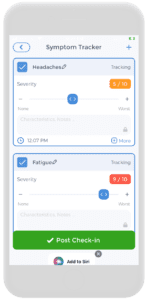
- Severe headaches (3)
- Fatigue (3)
- Vision problems (3)
- Chest pain (3)
- Difficulty breathing (3)
- Irregular heartbeat (3)
- Blood in the urine (3)
- Pounding in the chest, neck, or ears (3)
If any of these apply, utilize the CareClinic Platform by using the Symptom Tracker function. Indicate which symptoms are applicable as well as to measure the severity as well as personal notes (if needed). This will be a fantastic method to keep your own blood pressure diary (or whatever you want to call it). This way, no important details are left out of the conversation with the healthcare team/professional.
Causes of Hypertension
There is no absolute cause of why one would have higher blood pressure. However, there have been several factors that may contribute to higher blood pressure values such as:
- Medications such as birth control pills, cold remedies, decongestants, over-the-counter pain relievers, and some prescription drugs may cause a temporary rise in blood pressure (3)
- A buildup of fatty deposits in the arteries (atherosclerosis) can also lead to prehypertension (from a higher fat content diet or poorer eating habits in conjunction with sedentary lifestyles) (3)
- Obstructive sleep apnea, Kidney disease, Adrenal Disease, and Thyroid disease can also lead to prehypertension (3)
- Smoking (3)
- Overweight or obesity (3)
- Lack of physical activity (3)
- Too much salt consumption (3)
- Too much alcohol consumption (more than one to two drinks per day) (3)
- Stress (3)
- Older age (3)
- Genetics (3)
- Family history of high blood pressure (3)
- Chronic kidney disease (3)
- Certain ethnic groups such as African-Americans. They are at greater risk of developing hypertension than people of other races. Some studies suggest that African Americans may be more sensitive to salt than other races. For those who are genetically prone to salt sensitivity, a small amount (a half-teaspoon) of salt can even raise blood pressure by five mm Hg (3)
Treatment of High Blood Pressure
If high blood pressure is a concern, making a few lifestyle changes can improve heart health tremendously. All of these options should be discussed with the healthcare team before starting or stopping any of these options.
Nutrition: The DASH Diet
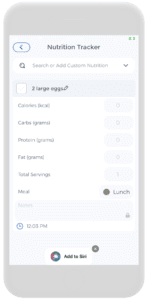
Dietary changes can easily help control blood pressure without the need for medication. One diet designed to promote lower blood pressure is known as the “DASH” diet. DASH stands for Dietary Approaches to Stop Hypertension. The DASH diet recommends eating more vegetables, fruits, whole grains, low-fat dairy products, poultry, nuts, and fish. Red meat, saturated fats, and sweets should be decreased (3).
The following is the DASH diet suggested daily intake:
- 7-8 servings of grain (3)
- 4-5 servings of vegetables (3)
- 4-5 servings of fruits (3)
- 2-3 servings of low-fat or fat-free dairy products (3)
- 2 or fewer servings of meat, poultry, and fish (3)
- Sweets should be at a limit to less than 5 servings per week (3)
All of this information can be easily recorded and tracked by using the Nutrition Tracker in the CareClinic Platform.
Physical Activity/Weight loss

Exercise is another lifestyle change that can lower help blood pressure without the need for medications. It is recommended that adults get about one hundred and fifty minutes per week of moderate exercise or seventy-five minutes of vigorous activity. This can include cardiovascular exercises such as walking, bicycling, gardening, playing basketball (indicated in the picture on the right), or other aerobic exercises (3,4).
On the other hand, muscle-strengthening activities (i.e weight training) are also recommended at least twice a week as well as stretching. Stretching is important because it enhances flexibility and can help prevent injuries. It is extremely important to check with your doctor if you are currently sedentary and wish to start exercising. Also importantly, make exercise fun by doing activities you enjoy or find an exercise buddy to help motivate you (3)!
Amazingly, if overweight or obese, losing even five pounds (2.2 kilograms) can lower blood pressure.
Concurrently, the CareClinic Platform has an activity tracker in one of the many functions that it can provide. With this, inputting your daily activity (or even weight changes) has never been easier. Utilize it today!
Reduction in Salt Intake
Salt (or sodium) intake can also affect blood pressure. Sodium helps the kidneys retain water which will increase the workload of the heart. Over time, larger amounts of sodium will increase blood pressure. The American Heart Association recommends that healthy adults should have no more than 2,300 milligrams (mg) of sodium a day. Ideally, most adults should limit salt to less than 1,500 mg a day, when possible. Additionally, it is important to remember to check the salt content in processed foods, such as canned soups and frozen foods as they tend to be higher in salt levels (1, 3, 4).
Monitoring Fluid Intake
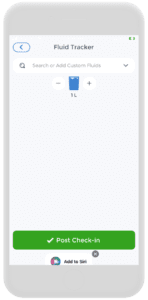
Water is essential to vital life. However, there is no correlation between water intake and lowering blood pressure. On the other hand, recording fluid intake throughout the day is essential to see which fluids may be impacting the BP values. This can be easily monitored using the CareClinic Platform.
For instance, alcohol is a known risk factor for high blood pressure. The American Heart Association guidelines recommend no more than two alcoholic drinks per day for men and no more than one drink a day for women. One drink is defined as one 12-ounce beer, 4 ounces of wine, 1.5 ounces of 80-proof spirits, or 1 ounce of 100-proof spirits. Adults who consume more than three drinks in one sitting can temporarily increase their blood pressure. However, binge drinking can lead to long-term increased blood pressure (3, 4).
On another note, caffeine intake should be monitored as well. However, no evidence shows caffeine causes long-term high BP. Although a caffeinated beverage might cause a temporary rise in blood pressure. It is also possible that caffeine could block a hormone that helps keep arteries widened, which causes blood pressure to rise. It is also been shown that caffeine causes the adrenal glands to release more adrenaline (a type of stress reaction hormone), causing blood pressure to increase (3, 4).
Using the CareClinic Platform, the conversation with your healthcare professional will be more transparent and easy. Get started today!
Nicotine Cessation
Talk to your physician about how to quit smoking, as it is also best to avoid second-hand smoke as well (4).
Medications
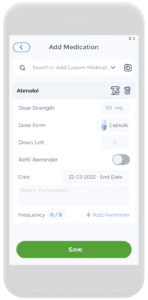
Some of the classes of medications are listed below:
- Diuretics (“water-pills”) (3)
- Beta-blockers (3)
- ACE-Inhibitors (angiotensin-converting enzyme) (3)
- ARBs (Angiotensin receptor blockers) (3)
- Calcium channel blockers (3)
- Others: alpha-blockers, vasodilators, and central alpha agonists (3)
The picture on the right illustrates a beta-blocker medication called Atenolol as an example. Using the CareClinic Platform for all your medication needs is super simple. It allows monitoring of medication as well as useful reminders for refills. Never miss another dose again!
It is also important to speak to your healthcare team about the abrupt stopping of any medication. Despite seeing normal blood pressure measurements at home, do not stop the medication unless advised by a professional.
BP Heart Rate
What is BP Heart Rate?
Heart Rate is defined by how many times the heart beats per minute. Usually, the normal range is 60-100 beats per minute. Undoubtedly, heart rate and blood pressure do not increase at the same rate. By definition, a rising heart rate does not cause your blood pressure to increase at the same rate. Even though your heart is technically beating more times a minute, healthy blood vessels dilate (get larger) to allow more blood to flow through more easily (1).
However, an elevated heart rate has been correlated with elevated blood pressure,e which in turn will lead to an increased risk for hypertension. Commonly, hypertensives will have an increased risk for cardiovascular disease. Despite these important relationships, heart rate is generally not a major consideration in choosing antihypertensive medications. In part, this is due to a lack of evidence supporting heart rate lowering as a therapeutic strategy in hypertension (6).
Heart Rate and Exercise
During exercise, the heart will speed up so more blood will reach the muscles. It is possible for the heart rate to double safely, while the blood pressure may respond by only increasing a modest amount. Usually, the maximum heart rate will reach a value based on the age of the individual. The general equation used is 220 subtraction by age. It is important to speak to a professional before starting any exercise regimen (1).
Different Types of Hypertension
These are worth mentioning as the word hypertension has other connotations depending on which system it can affect.
Malignant Hypertension
This is similar to the “hypertensive crisis” located above in the BP ranges chart (a value of 180/120+ mmHg). However, the patient will have signs of end-organ damage such as stroke, kidney damage, heart attacks, or loss of consciousness. Other symptoms of malignant hypertension include bleeding and swelling of blood vessels in the back of the eye (retina), anxiety, nosebleeds, severe headache, and shortness of breath. Malignant hypertension may even cause brain swelling, although very rare (3).
This is a medical emergency and needs immediate 911 attention (3).
Pulmonary Hypertension
Pulmonary refers to the lungs, including changes in the cells that line the pulmonary arteries (blood that supplies the lungs with its fuel and nutrients). Therefore, these changes cause the walls of the arteries to become stiff and thick. Furthermore, extra tissue may also form, worsening the stiffness. This can reduce or block blood flow through the blood vessels. Increased blood pressure occurs because it is harder for blood to flow. This condition will primarily affect the arteries in the lungs and the right side of the heart (3).
Symptoms include:
- Fatigue (3)
- Shortness of breath (3)
- Dizziness (3)
- Chest pain or pressure (3)
- Swelling in the ankles, legs, and abdomen (3)
- Bluish color to the lips and skin (3)
- Racing pulse or heart palpitations (3)
There is no cure for pulmonary hypertension, therefore, treatments are available to improve symptoms and slow the progression. Surgery is an option for those who are not improving with medications alone (3).
Gestational Hypertension
Gestational hypertension is high blood pressure that develops during pregnancy. It generally develops after week 20. It can affect women who had normal blood pressures prior to conceiving a baby. The danger is having gestational hypertension is that if not properly managed, it can lead to something called preeclampsia (3).
Problematically, preeclampsia is the revelation of high blood pressure with the leakage of protein into the urine by the kidneys. Preeclampsia can be dangerous to both the mother and the baby. High blood pressure during pregnancy may lead to decreased blood flow to the placenta, placental abruption, premature delivery, or future cardiovascular disease. This is a dangerous situation and needs medical attention (3).
Normally, the blood pressure will return to normal after the delivery of the baby (3).
BP Tracker Review
While there is technically no “cure” for high blood pressure, the usage of medications as prescribed and making lifestyle changes can enhance the quality of life and reduce the risk of heart disease, stroke, kidney disease, and more. Do not let hypertension stop you from living your life! Use the CareClinic as your Blood Pressure Tracker by downloading it on your iOS and Android devices today.

